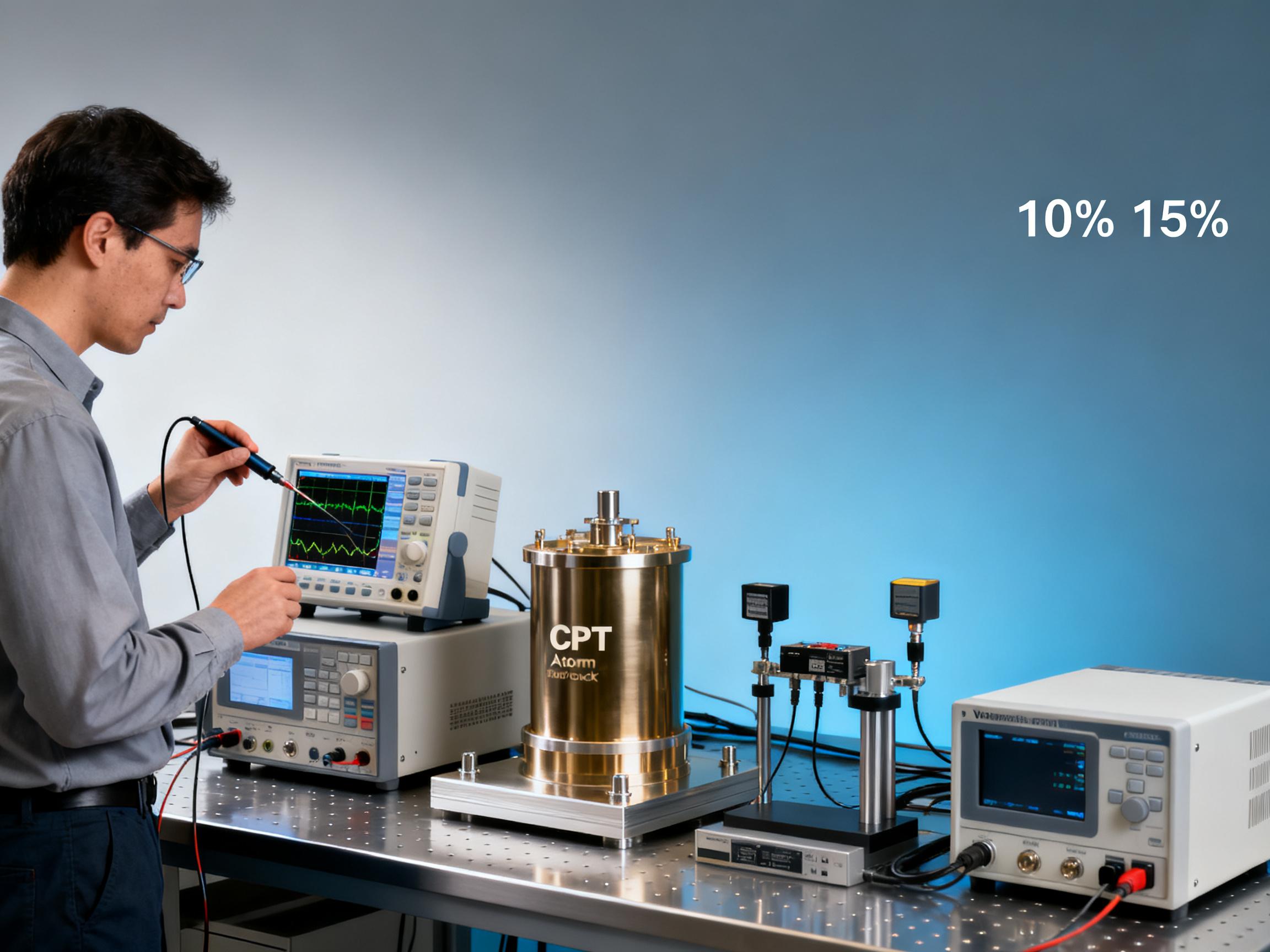RELATED
![How CPT Atomic Clocks Reduce OPEX in 5G Base Stations [Real Data] How CPT Atomic Clocks Reduce OPEX in 5G Base Stations [Real Data]](https://usimg.bjyyb.net/grey.png?x-oss-process=image/resize,m_fixed,w_800,h_600,limit_0) How CPT Atomic Clocks Reduce OPEX in 5G Base Stations [Real Data]2025-12-11
How CPT Atomic Clocks Reduce OPEX in 5G Base Stations [Real Data]2025-12-11 2024 CPT Atomic Clock vs Rubidium: Which Offers Better Stability for Telecom Networks?2025-12-08
2024 CPT Atomic Clock vs Rubidium: Which Offers Better Stability for Telecom Networks?2025-12-08 Live Demo Results: CPT Atomic Clock Performance Under Harsh Environmental Tests (Data Inside)2025-12-05
Live Demo Results: CPT Atomic Clock Performance Under Harsh Environmental Tests (Data Inside)2025-12-05 Budgeting for Precision: Total Cost of Ownership for a Rubidium Atomic Clock Over 5 Years2025-12-03
Budgeting for Precision: Total Cost of Ownership for a Rubidium Atomic Clock Over 5 Years2025-12-03
MESSAGE
Introduction
Recent breakthroughs in cpt atomic clock design deliver measurable gains in stability, power efficiency and manufacturability—news that matters to information researchers, system operators, technical evaluators, corporate decision-makers and contract executors. Leveraging SPACEON Electronics' expertise, these enhancements bridge lab advances and field-ready products, improving synchronization performance across applications while reducing size, weight and power compared to traditional Rubidium atomic clock modules. This overview summarizes practical improvements, deployment considerations and performance metrics to help stakeholders assess adoption and integration risks. In practical terms, the new generation of cpt atomic clock designs focuses on coherent population trapping techniques, integrated photonics, lower-drive electronics and smarter thermal management. These design shifts yield not only better short-term stability but also reduce warm-up time and overall energy draw during continuous operation. For an information researcher, that means more predictable measurement windows and easier comparison across datasets. For an operator, that translates into less frequent recalibration and lower operational expenditure. For a technical evaluator and corporate decision-maker, the key questions become: how does a cpt atomic clock compare with existing Rubidium atomic clock references in my deployed environment, and what are the migration steps and verification checkpoints? For contract executors, the breakdown between specification, test procedures and acceptance criteria must map directly to measurable metrics—Allan deviation, holdover time, and SWaP (size, weight and power) budgets. Throughout this article, we reference industry-standard metrics (Allan deviation, phase noise, NIST traceability) and present pragmatic recommendations for procurement and integration. We also make explicit comparisons where the cpt atomic clock offers compelling advantages and where the more mature Rubidium atomic clock remains a practical choice. Finally, we outline certification pathways and suggest test protocols that align with international standards such as IEEE 1588, ITU-T G.8275.1 and relevant MIL-STD environmental tests, helping readers translate lab performance into field reliability claims.
Definition, Technical Performance and Comparison
Understanding the operating principle and the measurable performance changes is essential before evaluating any new timing module. A cpt atomic clock uses coherent population trapping to create a narrow resonance in the hyperfine transition of alkali atoms; it is often implemented with micro-fabricated vapor cells, vertical-cavity surface-emitting lasers (VCSELs) and compact microwave interrogation circuits. This contrasts with a Rubidium atomic clock that typically relies on a discharge lamp or a different interrogation scheme around the rubidium hyperfine transition. The practical differences appear in metrics that matter: short-term stability (expressed as Allan deviation at 1s–1000s), long-term drift, time-to-lock and susceptibility to vibration and temperature gradients. Typical modern cpt atomic clock modules can achieve Allan deviations competitive with many Rubidium atomic clock modules while offering lower power consumption and smaller physical envelopes. That said, the Rubidium atomic clock family still retains advantages in some long-term stability niches and in deployment familiarity. Below is a concise performance snapshot to help technical evaluators compare candidate modules in procurement and test planning.
Applications, Procurement Guidance and Standards
Applications that benefit early from the new cpt atomic clock generation include mobile network timing (5G/4G synchronization), edge data centers, distributed sensor networks, telecommunications backhaul, and navigation augmentation systems where SWaP and power are constrained. Operators running legacy solutions using Rubidium atomic clock nodes can reduce rack space and cooling budgets by migrating selected nodes to cpt atomic clock modules while retaining some Rubidium atomic clock units as reference masters during phased rollouts. Procurement teams should define acceptance tests that reflect operational reality: start-up time under expected ambient temperature cycles, holdover performance during GNSS outages, vibration and shock tolerance per MIL-STD-810 (or equivalent), and phase noise at offset frequencies relevant to the application. Include traceability requirements such as NIST-traceable calibration or third-party lab validation. When writing specifications, call out both absolute metrics (Allan deviation, holdover seconds for X dB loss) and environmental conditions (temperature range, MTBF). Also require firmware and hardware change control policy from vendors, because field updates can affect long-term performance. For organizations comparing vendors, include a short pilot acceptance window with clear exit criteria: a pilot that demonstrates stability metrics over 30–90 days under representative loads provides high confidence. Standards to reference include IEEE 1588/PTP profiles, ITU-T timing and synchronization recommendations, and local telecom compliance regimes. Cost analysis should weigh total cost of ownership: initial unit cost, lifecycle power consumption, rack and cooling footprint, maintenance visits, and calibration intervals. In many cases, the lower power and smaller size of a cpt atomic clock yield faster operational ROI even when the unit price is similar or slightly higher than a comparable Rubidium atomic clock module.
Market Trends, Misconceptions, Case Study and FAQ
Market trends show a steady shift toward modular, low-power timing sources because distributed compute and sensing proliferate at the network edge. The cpt atomic clock is central to that shift, but misconceptions persist: some stakeholders expect immediate parity in every metric between new cpt atomic clock modules and decades-old Rubidium atomic clock designs—this is not always realistic. Instead, treat the cpt atomic clock as a complementary technology that shines where SWaP and rapid recovery matter. A recent deployment case: a telecom operator integrated cpt atomic clock nodes into micro-site cabinets for synchronized small cells. The pilot replaced several older Rubidium atomic clock units and reduced cabinet heat dissipation by over 50%, while meeting holdover requirements for GNSS interruptions up to 5 minutes. The operator documented lower maintenance trips and improved site uptime. Common FAQs include: Q: "Can I swap a Rubidium atomic clock for a cpt atomic clock without changes to my PTP/PTM architecture?" A: In many cases yes, but validate phase noise and holdover in your architecture; require test vectors during procurement. Q: "Are CPT modules more vulnerable to temperature swings?" A: Early designs were sensitive, but modern modules incorporate active thermal control and compensation algorithms. Q: "What certification should I require?" A: Ask for environmental testing (MIL-STD or IEC equivalents), electromagnetic compatibility per CISPR/EN standards, and documented traceability of frequency calibration. Why choose us: SPACEON Electronics partners bring proven R&D, traceable manufacturing and field support. We provide pre-deployment testing, tailored acceptance criteria, and lifecycle support to reduce integration risk. Contact us to discuss a pilot, request a datasheet comparison between cpt atomic clock and Rubidium atomic clock modules, or to arrange an on-site technical workshop with our timing engineers.
CONTACT US
Please use the form below to get in touch.
If you need a reply we will get in touch as soon as possible.

![How CPT Atomic Clocks Reduce OPEX in 5G Base Stations [Real Data] How CPT Atomic Clocks Reduce OPEX in 5G Base Stations [Real Data]](https://usimg.bjyyb.net/sites/91500/91958/1765179857856560163985903616.jpeg)



